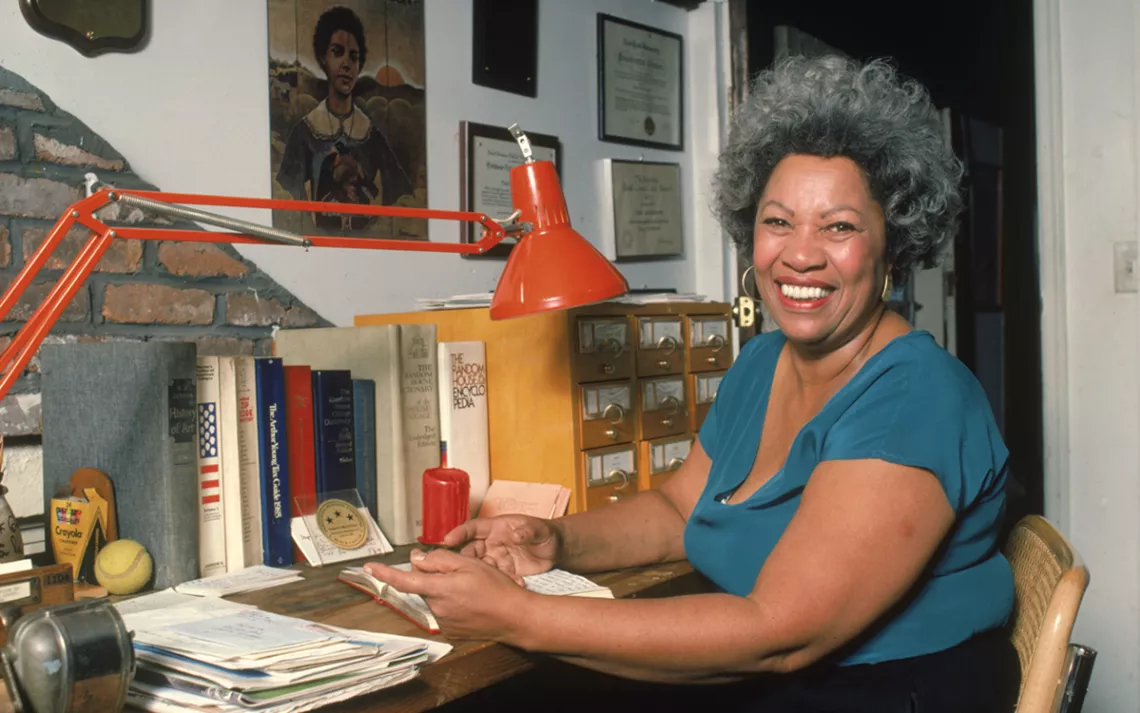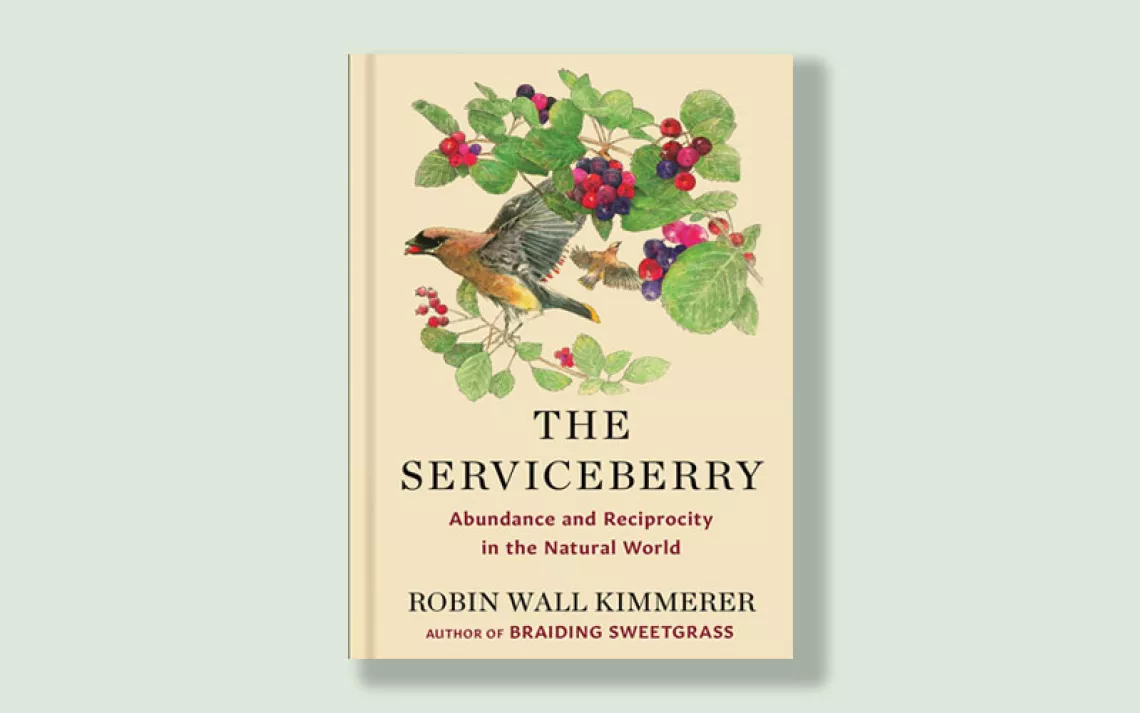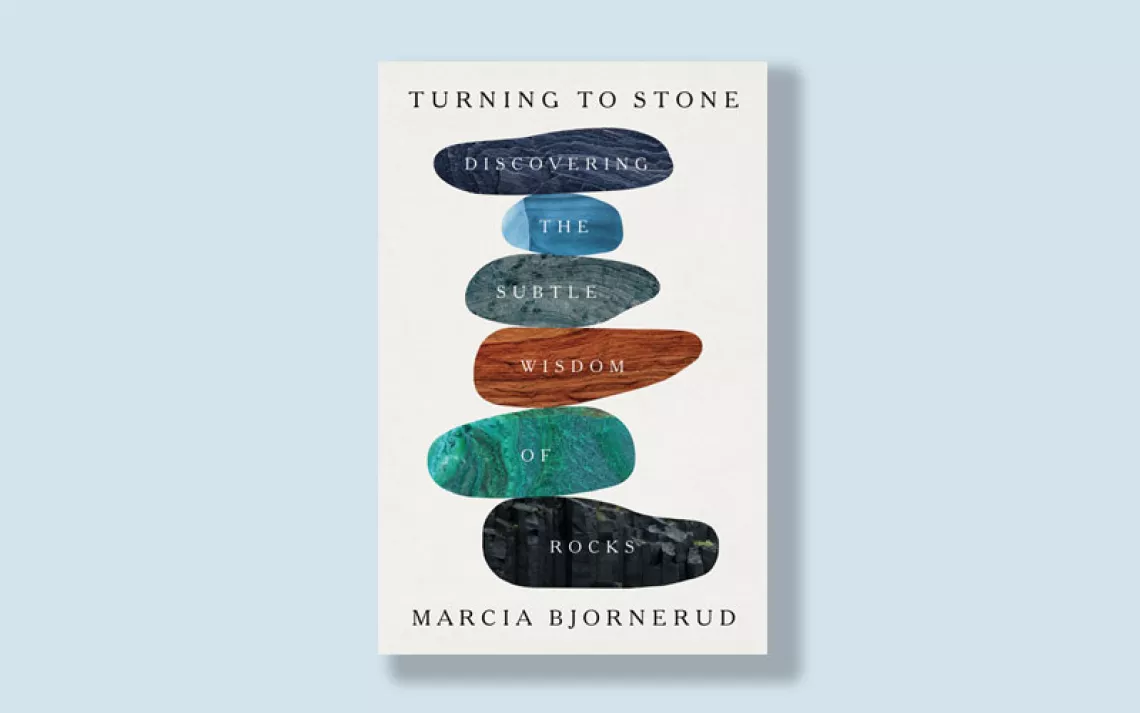Three Ecological Lessons From Toni Morrison
The Nobel winner had a keen eye for the natural world

Toni Morrison at home, circa 1980s. | Photo by Bernard Gotfryd/Getty Images
Nobel Laureate and Pulitzer Prize–winning author Toni Morrison is not typically thought of as a nature writer. But embedded in her works are profound lessons about the natural world. Morrison was a prolific gardener, birder, and mother to many houseplants (including a jade plant grafted from one that belonged to Nelson Mandela). A 1981 interview in The New Republic reveals just how deep her fascination with nature was. "I must confess, though, that I sometimes lose interest in the characters and get much more interested in the trees and animals. I think I exercise tremendous restraint in this, but my editor says, ‘Would you stop this beauty business.’ And I say, ‘Wait, wait until I tell you about these ants.’"
Once you’ve noticed Morrison’s ecological awareness, you’ll begin to see it everywhere in her writing. In Beloved, Sethe, the protagonist, bears scars on her back that Morrison describes as resembling a chokecherry tree, “red and split wide open, full of sap.” In Tar Baby, Morrison narrates the degradation of a forest ecosystem with the felling of daisy trees by early laborers: “When it was over, and houses instead grew in the hills, those trees that had been spared dreamed of their comrades for years afterward.”
Her attention to the ecology of race and place—and how the two are deeply intertwined—are teeming with insights. Here are a few of them.
Nature is alive with its own memory
Morrison doesn’t just describe the natural world; she makes it a central character with a memory and will of its own. Morrison begins Sula with the memory of a predominantly Black town called the Bottom. “In that place, where they tore the nightshade and blackberry patches from their roots to make room for the Medallion City Golf Course, there was once a neighborhood.” Even after the Bottom’s transformation into a recreational space for white residents, Morrison asserts that the land never forgot its original purpose: as a haven for the story’s Black characters.
Morrison’s allusion to ecological memory builds on emerging research that proves ecosystems do store knowledge about earlier conditions in the form of “material and information legacies.” Material legacies exist in the form of living elements like seeds, seedlings, and microbes as well as nonliving features like logs and leaf litter. When these materials survive after a disturbance, they become sites for the growth of vital microbes and other organisms as the ecosystem recovers.
"Information legacies" are the genetic adaptations that allow organisms to survive a disturbance—like trees in fire-prone regions that evolve to have thicker bark. Together, this “memory” helps an ecosystem bounce back after events like wildfires or flooding and shapes the ecosystem’s response to future events. In a 2018 study in Forest Ecology and Management, researchers found that in hardwood forests in North America, a loss of ecological memory—from excessive timber harvesting, invasive species, pests, and other disturbances— altered the response of forests to management interventions.
In her 1996 essay “The Site of Memory,” Morrison remarked, “You know, they straightened out the Mississippi River in places, to make room for horses and livable acreage. Occasionally the river floods these places. ‘Floods' is the word they use, but in fact it is not flooding; it is remembering.” She adds, “All water has a perfect memory and is forever trying to get back to where it was.”
The fate of humanity is closely tied to that of the earth
Nowhere are natural elements more apparent than in Morrison’s celebrated novel The Bluest Eye. The story begins with an aberration in the natural world, the line “There were no marigolds in the fall of 1941.” The narrator suspects it was “because Pecola was having her father’s baby that the marigolds did not grow.” This meditation on flowers soon turns to the earth and connects the fate of Pecola’s child to the soil: “The seeds shriveled and died; her baby too.”
Morrison was astute for asserting that bodies are not closed systems but deeply impacted by the broader environment. Pecola internalizes the racist beauty standards of Depression-era Lorain, Ohio, and spends long hours looking at herself in the mirror, "trying to discover the secret of the ugliness, the ugliness that made her ignored or despised at school, by teachers and classmates alike."
Dirt is a recurring theme in The Bluest Eye and brings to mind a teaching from Wendell Berry: “What we do to the land, we do to ourselves.”

Sign up to receive Sierra News & Views
Get articles like this one sent directly to your inbox weekly.
With this action you affirm you want to receive Sierra Club communications and may vote on policy designated by the Sierra Club Board.
Understanding nature connects us with our truest selves
In Home, Morrison’s 10th novel, Frank Money, a Korean War veteran, returns home to Lotus, Georgia, to rescue his sister, Cee, from abuse. Traumatized by violence from the war, Frank is also in need of healing, and the siblings find themselves yielding to the natural folk remedies of their elders in this rural community. “The final stage of Cee’s healing had been, for her, the worst. She was to be sun-smacked, which meant spending at least one hour a day with her legs spread open to the blazing sun. Each woman agreed that that embrace would rid her of any remaining womb sickness.”
Throughout the novel, the siblings return to a particular tree for shade and comfort. “When he found himself on the bank of Wretched, the sometimes stream, sometimes creek, other times a bed of mud, he squatted beneath the sweet bay tree.”
The siblings leave restored, not just because of the natural treatments they received but because they’ve observed a kind of resilience in the landscape around them that is also present in themselves. When Cee learns that the abuse she suffered made her infertile, she contemplates a life after such loss by observing her elder’s garden. Cee finds hope in the way strawberries and cornstalks manage to bloom in hostile conditions. “Her garden was not Eden; it was so much more than that. For her the whole predatory world threatened her garden, competing with its nourishment, its beauty, its benefits, and its demands.”
Returning a final time to the sweet bay tree, Frank remarks, “I stood there a long while, staring at that tree. It looked so strong. Hurt right down the middle. But alive and well.” Morrison eschews trite metaphors equating nature with healing, to instead position nature as instructive for the self.
As Morrison wrote in Sula, “Birth, life, and death—each took place on the hidden side of a leaf.” The environmental threads in her work illustrate what lessons we might derive from earthly systems if we’re quiet enough to listen, and patient enough to notice.
 The Magazine of The Sierra Club
The Magazine of The Sierra Club



